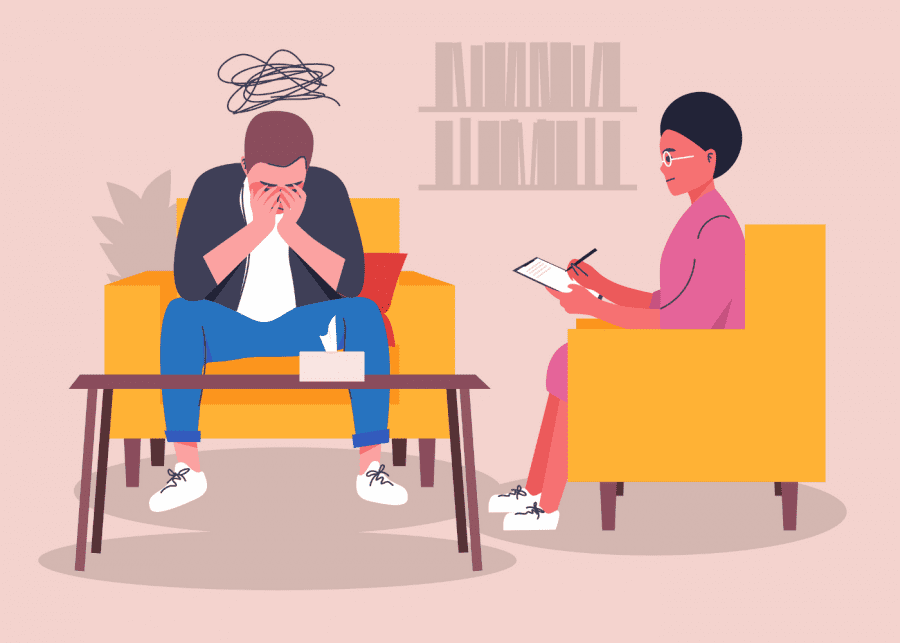
Thinking about seeking therapy? We help to debunk myths and answer common questions with the help of a clinical psychologist.
The Covid-19 pandemic has changed our lives completely. Over the past year, we’ve experienced working from home, the circuit breaker lockdown, social-distancing measures and border closures. But that said, let’s focus on the silver lining. One of them being how mental health has been pushed to the forefront.
It’s an understatement to say Covid-19 has greatly affected our mental health. A recent article by The New York Times addresses a new phenomenon called languishing. Think of it as “the neglected middle child of mental health. It’s the void between depression and flourishing – the absence of well-being.” From a local perspective, one in four Singaporeans mentioned they were not in good mental health during last year’s circuit breaker, according to a survey by Ipsos.
All that to say, you’re not alone. If you’re feeling overwhelmed or ‘meh’, we totally get it. That’s why we spoke to an expert to bust the myths about therapy and take down the stigma surrounding mental health issues. So if you’re considering going for therapy, we’ve got the answers to some common questions and misconceptions.

Myths about therapy debunked by a clinical psychologist
Meet clinical psychologist Claudia Doig of Psychology Blossom. A member of the Singapore Psychological Society, she has worked with various clinics including NUH and NUS Clinical and Health Psychology Centre. She specialises in dealing with mental issues like PTSD, anxiety and depression.
Myth 1: Therapy is only for people with mental health issues
This is a common misconception that can’t be further from the truth. “Most of our clients don’t have a diagnosable mental disorder,” Doig says. Her clientele varies: some just want to gain a better understanding of their own persona while others seek help for symptoms of low mood and stress.
She recommends therapy to anyone who wants to improve themselves, “whether that may be better communication, better self-esteem, better self-care, more self-compassion or gratitude, processing past incidents, or the desire to live life in a more meaningful way.”
Myth 2: Therapy is the same as talking to your friends about your problems
As Doig puts it, “while friends and family may have the best intentions at heart, they may lack the skills to be a good listener and try to solve the problem instead.”
Psychologists help clients gain insight into their own situation and provide healthy coping tools to deal with life’s challenges. “In a nutshell, the therapist is a non-biased, non-judgmental professional.”

Myth 3: Therapy is expensive
There may be some truth to this. But that said, there are plenty of therapy options in Singapore, including “free-of-charge support for crisis situations (read: IMH and SOS hotlines), subsidised rates with family clinics and hospitals, and private clinic options.”
Would you think twice about going to the doctor to get your fractured arm treated because it’s too expensive? We didn’t think so. Mental and physical health are equally important.
Myth 4: Therapy doesn’t work
To that, Doig replies, “I’d first want to know the experiences they had that led them to this opinion.” She mentions her clients benefit highly from psychotherapy. “If [it] did not help, then we would be out of a job. The only way to know if something works for you is to try it. It’s important to choose your therapist carefully, as it’s paramount that you have a therapeutic alliance with your therapist.”
Myth 5: Going for therapy means you’re not independent or strong in facing challenges
On the contrary, you’re brave to seek help. It takes a lot of willpower, courage and strength to pick yourself up when you’re burdened with emotional turmoil. “Being strong and independent actually means dealing with challenges in the most efficient way, which oftentimes involves talking to a professional in the field”, Doig explains.

Myth 6: Therapy is a never-ending journey
Therapy is a unique experience for everyone. It really depends on the purpose of your visit and what you’d like to achieve. “As a general guideline, a typical course of focused therapy lasts about 12 regular sessions,” Doig says.
According to Doig, the first session involves understanding the client’s challenges, background, and reasons for seeking therapy. For an overview, the typical parts of a therapy session involve exploring the challenge at hand, psycho-education, gaining insight into idiosyncratic behaviours and ways of thinking, and equipping the client with tools to adapt and change to elicit positive outcomes.
Myth 7: Therapy can help solve all problems
Therapy isn’t a miraculous or instant solution. So no, therapists don’t solve your problems for you. Instead, they provide you with constructive ways or skills to navigate through different or difficult situations. At the end of the day, you’re in the driver’s seat of your life.
Now that we’ve dispelled some myths about therapy, we hope you’ll feel empowered to seek help if/when you need it.

